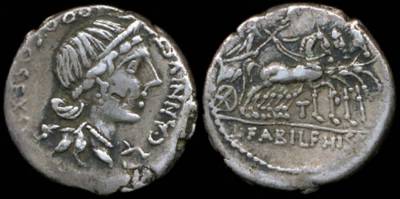Ancient Military Payment Coins (MPC)

Left click photo to enlarge.
Ancient MPC
Since most articles related to Military Numismatics deal with military payment certificates and other recent (mostly paper) issues, I thought it would be appropriate to give some coverage to some older military related coinage.
There is an antecedent to modern era military payment money. I found it in the coinage of the ancient Romans. Richard Alston, (University of London), has written widely on the life of the Roman Soldier. He wrote that it is "clear that the history of Roman coinage and military pay are very closely connected. The patterns of high minting of coins correlate neatly with the high levels of military activity and that it is clear that the army was the major item of expenditure in the Roman state budget." But, it is not always easy to determine for which audience particular coins were minted.
So now to the point, the Romans did mint coins specifically to meet the pay needs of their troops. Those coins can be properly called Military Payment Coins (MPC). Some who write about these coins call them military issues. Others don't differentiate them at all from general issues. But, some of these MPC were unique types, not otherwise minted for general circulation - so they can be separated from the overall population of coins minted for general circulation. Of course, after they were used as pay to the troops, they did enter circulation along with other coins.
The earliest example of a Military Payment Coin (MPC) I found, is a Denarius from the Roman Republic, which is a military issue, minted to pay Roman Legions in Spain, circa 82-81 BC. See the illustrated coin at the start of this article.
There were many and varied issues of MPC during the Roman Republic and Empire. Even some new denominations were created because of the influence of military pay on Roman coinage. For example, when Julius Caesar changed the basis of payment for troops so that pay could be represented in gold coin, we immediately get the first significant mintings of gold coin, though the soldiers were still normally paid in the far more useful silver. It was also during Roman times when the first seige coins appeared:
"During the fourth year (69/70 CE) of the five year heroic revolt against the Romans (known as The Jewish War), the first seige coins ever minted were struck by Jewish resisters in Jerusalem. Only they and the Zealots of Masada, under ben Yair, remained to fight by the time these coins were minted." [Hendin, Guide to Biblical Coins, 3rd Ed., p. 165-179, 1996].
Most of the siege coins minted over the next two millennia were clearly Military Payment Coins (MPC). I'm sure all of you know about siege coins, so I won't say much more about them. Of course there was also siege paper money, which I seem to remember Gene Hessler wrote about some years back. The ANA has a Money Talks segment on siege coins (item1956,Apr 2000) available on their Web site at: www.money.org
On top of what I covered so far there is the obvious area of collecting coins with military related designs, something I have been doing for more than fifty years. It is thought that some of the Roman military coin designs such as those used by Hadrian were directed particularly towards the troops. [to maintain their loyalty?] I've just tried to point out here that The Entire World of Military Numismatics should include more coverage in the area of coinage, especially Military Payment Coins (MPC).
Who knows, maybe someone may write a book on MPC.
